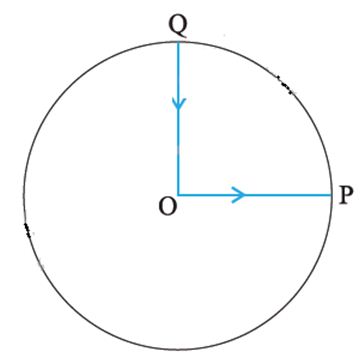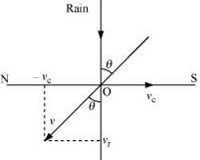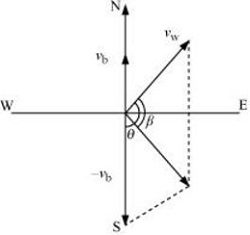Motion in A Plane - Online Test


(a) displacement is shortest distance b/w initial point and final point, as he returns back to origin after starting from origin, the displacement is zero.
(b) Average velocity =
As displacement is zero, so average velocity is also eqaul to zero.
(c) Radius r = 1 km
distance covered = OP+PQ+QO
=
= km
Time taken = 10 minutes = hour
Average speed
21.4 km/h
(a) Total distance travelled = 23 km
Total time taken = 28 min = h
∴ Average speed of the taxi =
(b) Distance between the hotel and the station = 10 km = Displacement of the car
∴ Average velocity =
The described situation is shown in the given figure.
Here,
vc = Velocity of the cyclist
vr = Velocity of falling rain
In order to protect herself from the rain, the woman must hold her umbrella in the direction of the relative velocity (v) of the rain with respect to the woman.
v = vr + (-vc)
= 30 + (-10) = 20 m/s
tan θ =
θ = tan-1
Speed of the man, vm = 4 km/h
Width of the river = 1 km
Time taken to cross the river =
Speed of the river, vr = 3 km/h
Distance covered with flow of the river = vr × t
= 750 m
In projectile motion, the maximum height reached by a body projected at an angle θ, is given by the relation:
h =
=> 25 =
= sin2θ = 0.30625
sin θ = 0.5534
∴ θ = sin–1(0.5534) = 33.60°
Horizontal range, R =
=
=
= = 150.5 m


